
HOME
INTRO
SYMBOLS
ALMANAC
ECONOMY
GEOGRAPHY
STATE MAPS
PEOPLE
FORUM
NEWS
COOL SCHOOLS
STATE QUIZ
STATE LINKS
BOOK STORE
MARKETPLACE
NETSTATE.STORE
NETSTATE.MALL
GUESTBOOK
CONTACT US
South Carolina Law
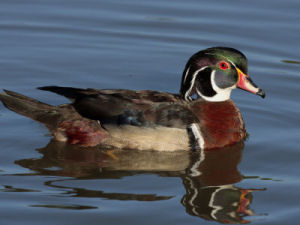
South Carolina State Duck: Wood Duck
Photographs, prints, and posters
The following information was excerpted from the South Carolina Code of Laws, Title 1, Chapter 1, Article 9, Section 1-1-665.
Title 1 - Administration of the Government
CHAPTER 1. GENERAL PROVISIONS
ARTICLE 9. STATE EMBLEMS, PLEDGE TO STATE FLAG, OFFICIAL OBSERVANCES
SECTION 1-1-711.
SECTION 1-1-711. Official state duck.
The "wood duck" (Aix sponsa) also known as the summer duck and the Carolina duck is designated as the official state duck.
Sources...
State of South Carolina. South Carolina Code of Laws. Columbia: State of South Carolina, 2011. Web. 21 May 2011.
Shearer, Benjamin F. and Barbara S. State Names, Seals, Flags and Symbols: A Historical Guide Third Edition, Revised and Expanded. Westport, Conn: Greenwood Press, 3 Sub edition, 2001.
Additional Information
Wood Duck - Aix sponsa: New Hampshire Public Television Knowledge Network: Wildlife Journal Junior.
Wood Duck: "All About Birds" by the Cornell Lab of Ornithology: Cornell University.
Aix sponsa wood duck: Animal Diversity Web (ADW)- online database of animal natural history, distribution, classification, and conservation biology at the University of Michigan.
Wood Duck Aix sponsa: University of Georgia: Georgia Museum of Natural History.
Aix sponsa (Linnaeus, 1758): Integrated Taxonomic Information System (ITIS) Here you will find authoritative taxonomic information on plants, animals, fungi, and microbes of North America and the world.
Waterfowl and Other Waterbirds: United States Geological Survey: Northern Prairie Wildlife Research Center Online.
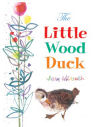
The Little Wood Duck
Brian Wildsmith
The Little Wood Duck, by Brian Wildsmith. 99 pages. Publisher: Star Bright Books (January 15, 2007) Reading level: Ages 4-8. Mother Wood Duck's children are excellent swimmers-all but one, who can only swim in circles because one foot is larger than the other. A charming story that will teach children an important lesson about individuality.

A House for
Wanda Wood Duck
Patricia
Barnes-Svarney
A House for Wanda Wood Duck, by Patricia Barnes-Svarney. 32 pages. Publisher: Ducks Unlimited, Inc.; 1 edition (August 1, 2002) Reading level: Ages 4-8. This second in the DU series of natural history books for kids tells the story of a family that builds a nest box for Wanda, their favorite wood duck. Her successful nesting becomes a tale of discovery as well as an important lesson in conservation. The book also comes with a bonus: a simple diagram on how to build a wood duck nest box. Since as many as 300,000 ducklings are reared in nest boxes each year-that lesson couldn't be more timely or important to the future of wood duck conservation.
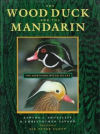
The Wood Duck
and the Mandarin
The Wood Duck and the Mandarin: The Northern Wood Ducks, by Lawton L. Shurtleff and Christopher Savage. 232 pages. Publisher: University of California Press; First Edition (November 11, 1996) The Wood Duck and the Mandarin: The Northern Wood Ducks This is a story of conservation told through the natural histories of two of the world's most fascinating birds, the Wood Duck of North America and the Mandarin of Asia. The only two species in their genus (Aix), these Northern Wood Ducks are native to different continents but have long been kept together in captivity. Now, for the first time in history, they are also flying side by side in the wild in a small area of northern California. This rare circumstance has given Lawton L. Shurtleff and Christopher Savage the opportunity to observe the Northern Wood Ducks' close relationship and is the starting point of this informative and beautifully rendered book.
Full of anecdotes and historical references as well as scientific observation and conservation recommendations, this very readable monograph provides a thorough look at two of the most beautiful waterfowl in the world. Shurtleff has studied and photographed Northern Wood ducks for 25 years, while Savage has researched and written about the mandarin for more than 40 years. The authors summarize others' research and also tell of these birds' place in art and literature. Their book is richly illustrated with 280 quality photographs. A splendid job with an authoritative yet entertaining text with much more appeal than one might expect from a specialized book.
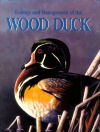
Ecology & Management
of the Wood Duck
Ecology & Management of the Wood Duck, by Frank C. Bellrose and Daniel J. Holm. 624 pages. Publisher: Stackpole Books; 1st edition (April 1, 1994) Ecology and Management of the Wood Duck features nearly 400 photographs, 131 figures, 8 color maps, 225 tables, 11 appendices, a glossary, and 30 pieces of original artwork by famed wildlife artist Francis E. Sweet. The book was edited and designed by the Wildlife Management Institute.
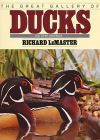
Great Gallery of
Ducks and Other Waterfowl
Richard LeMaster
Great Gallery of Ducks and Other Waterfowl, by Richard LeMaster. 352 pages. Publisher: Stackpole Books (March 1, 1995) The habits, behavior, and appearance of 27 species of ducks and waterfowl are illustrated in LeMaster's classic reference.

Waterfowl Identification
Richard LeMaster
Waterfowl Identification: The LeMaster Method, by Richard LeMaster. 76 pages. Publisher: Stackpole Books; Spiral edition (August 1, 1996) Instructions for identifying 40 species of ducks, geese and swans.
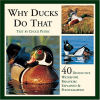
Why Ducks Do That
Chuck Petrie
Why Ducks Do That: 40 Distinctive Waterfowl Behaviors Explained & Photographed , by Chuck Petrie. 96 pages. Publisher: Willow Creek Press (May 2006) Why Ducks Do That answers many of the common, and some not-so-common, questions about the waterfowl species that share our world. The insightful text of the late waterfowl biologist Chuck Petrie is paired with beautiful color photographs by the nation's leading wildlife photographers, making this book a delightful read for anyone who ponders the life of birds.
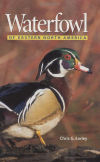
Waterfowl of
Eastern North America
Chris G. Earley
Waterfowl of Eastern North America, by Chris G. Earley. 160 pages. Publisher: Firefly Books (April 2, 2005) An indispensable field guide and reference for birders.
The eastern Continental Divide from Florida to Ontario contains the world's largest network of freshwater lakes, rivers, wetlands and coastal waters. It is home to an astonishingly large variety of ducks, geese, and other waterfowl. Waterfowl of Eastern North America is a richly illustrated pocket-sized field guide for birders and naturalists. Full-color photographs show these birds in their natural habitats in each season. Comparison pages group similar-looking birds on a single spread for quick reference. Concise and accurate information on each species.
Visit the NETSTATE South Carolina State Book Store for additional South Carolina related books, including South Carolina Reference Books, History, Biographies and Cookbooks.
 Custom Search
Custom Search



